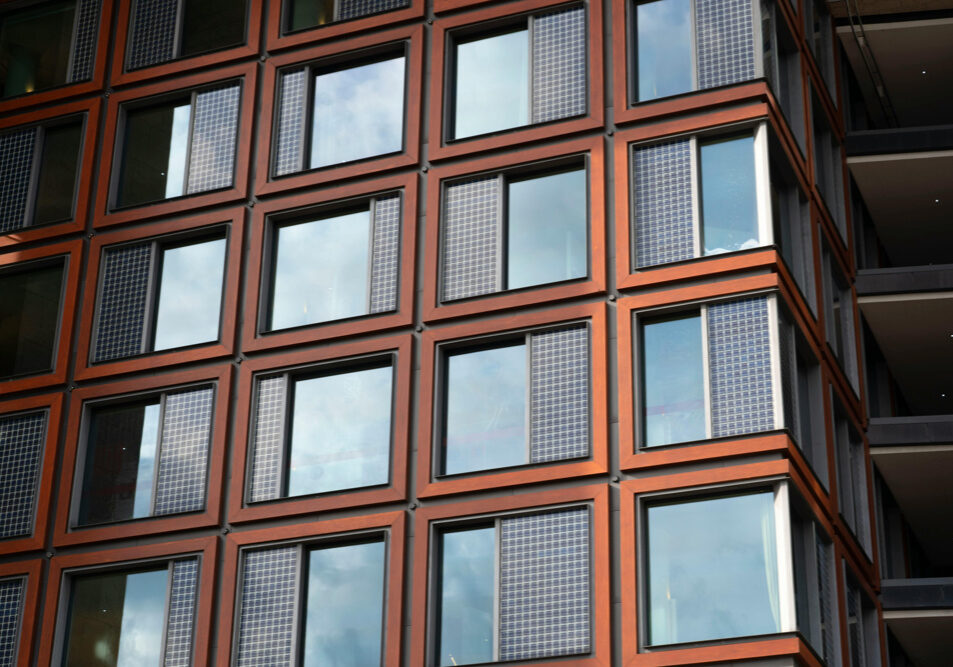How to Increase the Sustainability of your New-build Home

Building your own house is the perfect opportunity to create an energy efficient and comfortable home which is kind to you and our planet.
This is all the more urgent when you come to consider around 40 per cent of global energy consumption comes from buildings.
The blank canvas of a new build allows you plenty of freedom and opportunity to choose the materials and most importantly, the measures you can take in order not to keep your family warm in winter and cool in the summer while not harming the planet.
A Passive House Design - Passivhaus Blinds
One way of doing so is to adopt the increasingly popular Passivhaus standard whose key features aim to keep our homes carbon neutral and energy efficient by capturing heat from the sun, domestic devices and the occupants while providing constant fresh air, solar shading like external blinds and insulation.
However, you don’t need to go full Passivhaus to create a sustainable, comfortable and energy-efficient home. Instead, you can choose the measures that suit your budget.
Insulate, Insulate - Passivhaus Insulation
Super insulation can slash heating and cooling energy needs by up to 50 per cent, a massive cut in carbon emissions.
You can put insulation under the roof, external walls and floor, ideally forming a continuous barrier to maximise its effect to reduce heat loss and minimise the energy demand.
It can also be placed in internal walls to increase sound proofing and again help to reduce heat loss.
External Solar Blinds & Shading
It may sound counterproductive to want to shade your home from the sun’s rays in the UK but shading is important to moderate the heat coming in, especially for super insulated new builds.
The sun will heat the house far more quickly than an uninsulated home and getting rid of this excess heat and complying with Part O overheating regulations is much harder.
You can use overhangs, extra deep window reveals, solar glass or dynamic solar shading like external blinds to reduce the glare rather than environmentally damaging air conditioning.
Made from a special fabric with an open weave, the blinds not only allows occupants to enjoy the view through the windows when the blinds are lowered but protects soft furnishing and other furniture from sun damage. A recent client described the visual effect the fabric produces as 'almost like a painting.'
At the same time as reflecting heat, the external blinds also allow natural light to flood into the room, reducing the need for artificial light which once again helps reduce energy bills.
Conserving Water
According to the Energy Saving Trust, each UK household uses around 345 litres of water a day.
Installing low-flow taps via an aerator go a long way to save up to 40 litres of water a day. An aerator fits onto normal taps and reduces the amount of water coming out but doesn’t affect the pressure.
In the same way, water efficient shower heads that won’t impact pressure can reduce water usage by 40 litres a day. Let’s not forget toilet flushing uses up to 30 per cent of household water per day. A dual flush can save up to six litres a day and a cistern displacement device can save two litres for every flush.
A single water-efficient shower or low-flow tap can save over 1000 litres per month. Not only does this help the planet but saves money as well.
Water butts too are essential to collect rainwater to water your garden instead of using a hose.
Air-source Heat Pumps
Heat pumps can provide up to £300 a year savings compared to old gas boilers, depending on your tariff and are a low carbon heating source compared to traditional gas or oil boilers, reducing bills and emissions
They work by extracting warm air from outside and converting it into water to heat your home through radiators or underfloor heating as well as heat water stored in a hot water cylinder.
Low & Zero VOC Paints
Environmentally conscious homeowners are increasingly opting for paints that contain low volatile organic compound paints or zero VOCs to make sure the air quality is good.
Volatile organic compounds are chemicals in paint, that are released into the air years after the paint dries causing health problems such as headaches, dizziness and respiratory problems.
Low or zero eco-friendly VOC paints are vital for the environment as they are made using sustainable manufacturing processes.
Passivhaus Cost - Long term cost savings and sustainability
In an ideal world it would be fantastic to include all these energy efficient measures in a house building project, though most people have strict budgets they have to stick to.
However, it’s important to bear in mind that investing in good quality products and materials will pay off in the long term through their longevity, cost savings, lower operating costs, sustainability and your quality of life - something you can’t put a price on. Contact us for professional advice.



